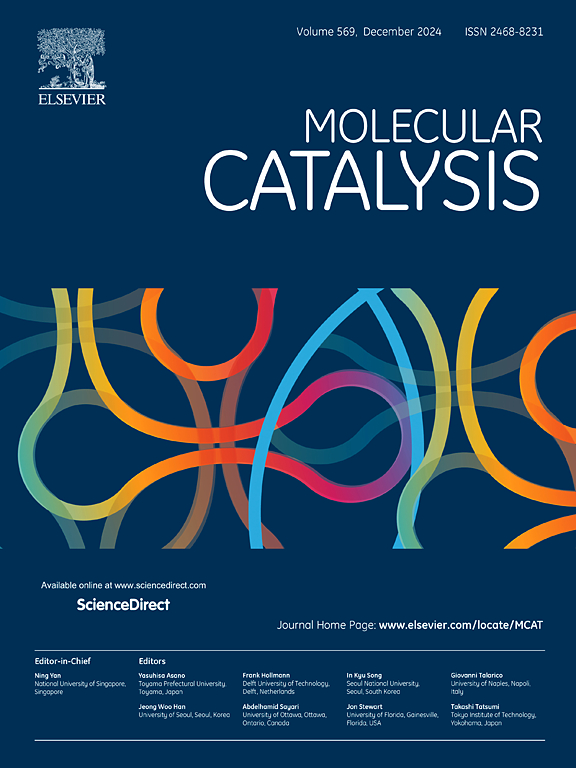Engineered nanoporous HPM@NH2−MIL-101(Fe) catalyst for efficient oxidative desulfurization: Anchoring, electron channel, and valence state
IF 3.9
2区 化学
Q2 CHEMISTRY, PHYSICAL
引用次数: 0
Abstract
Supported metal catalysts frequently experience diminished catalytic activity, attributed to the loss of active sites and impaired electron transport efficiency during reactions. From the perspective of structure-activity relationships, developing composite multivalent metal catalysts and elucidating the key role of synergistic effects are crucial for enhancing electron transport and ultimately improving oxidative desulfurization(ODS) performance. In this study, core-shell nanostructure based on Phosphomolybdic acid(HPM) and amino-functionalized MIL-101(Fe)(NH2−MIL-101(Fe)) was successfully synthesized through a facile and controllable impregnation method. The phosphate groups in HPM not only regulate the acidity of the catalytic environment but also maintain the overall structural stability. The enhanced mobility of lattice oxygen in HPM promotes the formation of oxygen vacancies during its interaction with NH2−MIL-101(Fe). The abundance of directional anchor sites for HPM can be provided by coordination via empty orbitals in Mo-O clusters with lone pairs of electrons on the nitrogen atoms in the amino group of NH2−MIL-101(Fe). The variable valence states of Fe and Mo efficiently activate hydrogen peroxide(H2O2). Furthermore, the mass transfer can be facilitated by carefully design pore windows, which matching the size of sulfur compounds. These synergistic effects collectively achieved 99.8 % ODS performance under optimal conditions(V(Ionic liquids, ILs)=1 mL, V(H2O2)=0.15 mL, catalyst: model oil (0.02:5, g/mL), 50 °C), while also demonstrating excellent recyclability. The reaction activation energy (45.25 kJ/mol) is calculated and the dual-pathway synergistic catalytic reaction mechanism was proposed by experiment and characterization. This study provides a promising design strategy for the research of advanced functional catalysts.

求助全文
约1分钟内获得全文
求助全文
来源期刊

Molecular Catalysis
Chemical Engineering-Process Chemistry and Technology
CiteScore
6.90
自引率
10.90%
发文量
700
审稿时长
40 days
期刊介绍:
Molecular Catalysis publishes full papers that are original, rigorous, and scholarly contributions examining the molecular and atomic aspects of catalytic activation and reaction mechanisms. The fields covered are:
Heterogeneous catalysis including immobilized molecular catalysts
Homogeneous catalysis including organocatalysis, organometallic catalysis and biocatalysis
Photo- and electrochemistry
Theoretical aspects of catalysis analyzed by computational methods
 求助内容:
求助内容: 应助结果提醒方式:
应助结果提醒方式:


